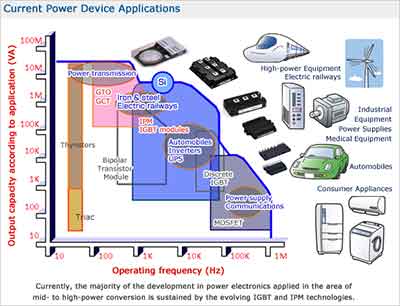Smaller Semiconductor Geometries
Advances in transistor technology are focused on the tiny semiconductor geometries required for radio frequency transistor applications. One of the most important aspects of transistor development in recent years has been the ability to reduce each transistor to size. Semiconductor companies have become accustomed to using smaller and smaller geometries (i.e., to incorporate a larger number of approaches into an integrated circuit) to reduce costs. [Sources: 0, 11, 12]
Get Your Quote FAST! Buy Online and Start Researching Today!
What is a Semiconductor Device?
If you are wondering what is a semiconductor device, you have come to the right place. Read this  article to learn about its Function, Structure, Doping, and Manufacturing. If you have any questions, you are encouraged to leave them in the comments below. Thanks for reading! And please share it with your friends and family.
article to learn about its Function, Structure, Doping, and Manufacturing. If you have any questions, you are encouraged to leave them in the comments below. Thanks for reading! And please share it with your friends and family.
Structure
A semiconductor device comprises several layers. The first layer consists of a semiconductor substrate. The second layer consists of a conductive line structure. The device is also comprised of an insulating film. The conductive layer has a top surface and a bottom surface. The top surface has a conductive portion and the bottom surface is transparent.
In FIG. 6, the semiconductor device is viewed from above. The conductive portion 8 and the source electrode 9 are not shown in this simplified view. The D-D cross-section of FIG. 6 is similar to the cross-section of FIG. 1. This structure of a semiconductor device is also useful for solar cells.
The new method of visualising the electronic structure of a semiconductor device can be used to develop more efficient electronic components. This development will help engineers to fine-tune these components and develop new technologies such as flexible electronics, photovoltaics, and spintronics. The scientists' new technique can also help them understand the structure of two-dimensional materials.
The semiconductor device structure is usually described in terms of its layers. Each layer is formed in a particular order. The layers of a transistor are typically characterized by their conductivity type, such as p or n. The base layer serves as the base and the intrinsic collector. The conductive portion has a gate electrode that is located inside the channel.
The device structure can also vary, and the structure can be a combination of two or more different structures. For example, a silicon cell can be designed with a trench gate structure. This type of structure is used to reduce the on-resistance and minimize the cell size. It can also minimize the defect rate of a short circuit between the gate and the source.
The base electrode structure 807 is formed by patterning layer 301. This structure can be fabricated without carbon or germanium, and can be made with other materials as well.
Function
A semiconductor device is an electronic device that uses a combination of electrical and electronic components to perform a specific function. These components are referred to as semiconductor integrated circuit devices (SICDs). The main circuit inside a semiconductor device is called the core circuit. The core circuit contains a number of individual components that each have a unique function. For example, a semiconductor device can include a memory block (SDRAM) or an address buffer/register.
A semiconductor device has many different layers and structures. In the first region, a dummy gate is formed. The second region is filled with a high-k dielectric. The third region is filled with a cover layer, which is made of a barrier material. Next, workfunction layers are formed by doping an underlying layer. Finally, annealing is performed to complete the process.
A semiconductor device with logic circuits has multiple input/output circuit cells and external terminals. The upmost wiring layer contains multiple flat power lines VLB1 and VLB2. These power lines conduct power voltages to the internal circuits of a semiconductor device. These power lines alternate with a line that conducts reference voltage.
A semiconductor device of this embodiment is shown in FIG. 8. The internal circuit area A includes several processors, including DSPs. These processors work in parallel to perform multiple processings. This allows for fast video processing. Hence, a semiconductor device with DSPs can be used for video recording and playback.
A semiconductor device can also have multiple wiring layers, including the upmost layer, which has the least sheet resistance. The upmost wiring layer also contains the power lines and external terminals. Both these wiring layers are connected to each other by wiring lines. This circuit also contains a number of other electrical circuits.
A semiconductor integrated circuit device can reduce the amount of wiring lines necessary to complete a layout. This can result in a more efficient layout process. The device also helps to reduce the amount of wiring between pad and signature circuit. There are many embodiments of this semiconductor integrated circuit device, and many variations can occur without departing from the spirit of the invention.